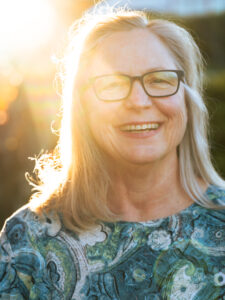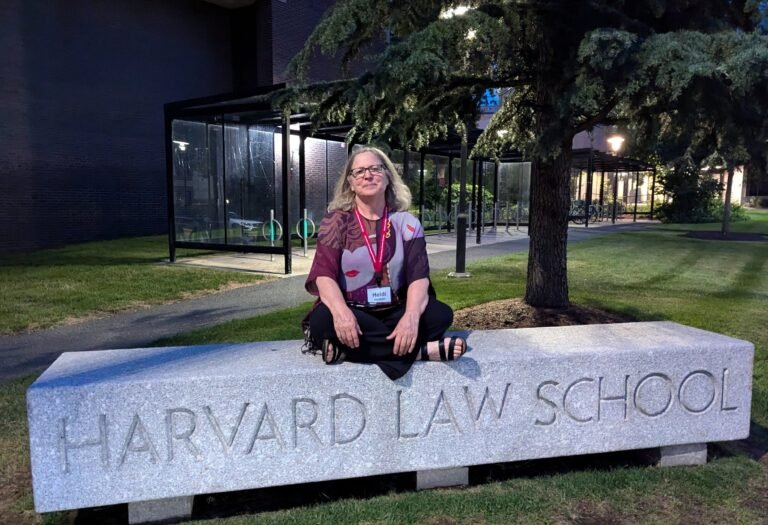
Finding Light in the Dark: From Depression to Psilocybin Healing
For most of my life, I lived under the heavy, relentless weight of treatment-resistant depression. I don’t remember a time when it wasn’t there. It sat behind every smile, every effort, every interaction. I spent decades trying to fix it. I took the meds. I did the therapy. I read the books. I felt my feelings. I bought the vitamins and supplements. I even tried things like green LED light visors, a light box, transcranial direct current stimulation (tDCS) (a non-invasive brain stimulation technique that uses weak electrical currents to modulate brain activity) and earbuds that beamed light straight into my ears. The light earbuds were actually the best of the bunch—but even they didn’t make the fog lift–or it lifted a little, but not enough to call it a cure. I went to the gym, did spin class and weight training, hiked all summer long in the woods.
Every single morning I woke up with the same question: What do I need to do to keep depression at bay and be a functional human today? It was exhausting—every day, every hour, an invisible battle.
In 2010, I started hearing about psilocybin for depression. The research was just emerging. It sounded promising, so I began applying to studies. I filled out applications, wrote heartfelt letters… and never heard back. Those studies, turns out, get 500 applicants for every spot they can fill.
In 2016, after a breast cancer diagnosis and treatment, I tried LSD on my own in a friend’s backyard. I was desperate. I hoped it would help me out of the fog. It was an interesting experience—but not transformative. Nothing changed. During that time, I tried psilocybin on my own several times. I never got lift off. I tried ketamine too, but it just wasn’t working, doing it on my own in my bedroom with underground ketamine.
At that time, I was still on a cocktail of medications: Wellbutrin, Gabapentin, Tramadol. I eventually made the decision to come off all medications. My doctor advised a rapid reduction: cut the pill in half this week, a quarter the next, then stop. Within days I was experiencing suicidal thoughts. That protocol could have killed me.
Thankfully, a friend told me about water titration—dissolving the pills and reducing the dose by no more than 5% per week. It took me five years, but I got off everything. Five years! Still, the depression stayed.
I asked around for someone to help me with mushrooms—I didn’t even know the word “guide” yet. I just kept asking people if they knew someone. I was groping in the dark, looking for light.
Then in January 2020, I met John Nelson, who would (eventually) become my best friend, lover, and business partner. He was also interested in psychedelics. Together, we found some mushrooms. I took 4.5 grams. Nothing. He took less and had a beautiful trip. I tried 6 grams. Still nothing. It was disheartening.
Then, one day in March—just as the world shut down from COVID—I decided I had had enough. I said, “I’m going to make sure I get lift off.”
I took 8 grams of mushrooms, steeped in lemon juice.
That’s a huge dose for most people. For me, it was finally enough.
Twenty minutes after I swallowed the mushrooms, I felt a wave of sensation rush through my entire body, from my toes to the top of my head. I remember saying out loud, “Oh my god, what have I done?!” as I collapsed onto the couch.
And then—I laughed. I laughed for two hours straight. John played music and I just laughed and laughed, as though every cell in my body had suddenly remembered what joy felt like.
And when it was over… I wasn’t depressed.
It was gone.
And in its place was something I hadn’t felt in years—really decades. I could feel my feelings. Not just the painful ones I’d spent years mining in therapy, but joyful ones. I felt light. I felt energized. I felt alive.
There was a new spaciousness in me, like someone had opened a window I didn’t know was sealed shut. I didn’t know where this was going to lead. I just knew something essential had shifted. I had a sense of purpose again. Not a grand plan—just a quiet knowing that I was supposed to be here. That life was possible.
For the first time in a very long time, I didn’t have to fight to be a functional human.
I was simply… here. And it was enough.
That day—the day I finally got lift off—John Nelson fell in love with me.
I didn’t know it at the time. Or maybe I felt it, but I wasn’t ready to trust it. I had spent so many years bracing against disappointment that even love felt like something to survive. So I held it gently, with caution.
We’d had our first date months earlier, in January, at a Psychedelic Society event. They were screening the film Dosed, and we went together. That night, we stood in the lobby afterward and signed the petition for Oregon’s Measure 109—the campaign to legalize psilocybin services. We hadn’t even done mushrooms yet ourselves. We were just following a spark. Curious. Hopeful. Desperate, in our own ways.
It felt like we were saying yes to something much bigger than us.
After my successful mushroom journey, we started going to more Psychedelic Society events. The people were warm and welcoming. There was an openness in those Zooms that I hadn’t felt in most mental health support groups. Less pathology, more possibility. I started to feel like maybe I wasn’t broken. Maybe I was just someone who needed a different kind of support.
And then—Measure 109, shockingly, passed.
To be honest, we were as surprised as everyone else. November 2020 was a strange, suspended moment—deep in Covid, everyone isolated and uncertain. But the voters of Oregon said yes. Yes to healing. Yes to exploration. Yes to something new.
John and I were in it now. During the quiet months of the pandemic, we did more journeys together—taking mushrooms, listening to music, lying under blankets. Thankfully, I finally moved him out of the friend zone and into the lover zone. We were learning how the medicine worked. How it moved through the body. What it opened. What it asked of us.
One day, a friend asked if we would sit for him—just stay with him while he tripped.
We said yes. We started reading everything we could find about how to be a good sitter—how to create a safe container, how to stay present, how to not intervene unless absolutely necessary. It was fascinating, and also way, way outside our comfort zones. Neither of us had any training. We were just two people trying to figure it out, because we believed in what this could be.
That experience changed something. Sitting for someone else—watching the medicine work from the outside—was humbling. Powerful. Sacred.
It also planted a seed that would eventually grow into something much bigger.


